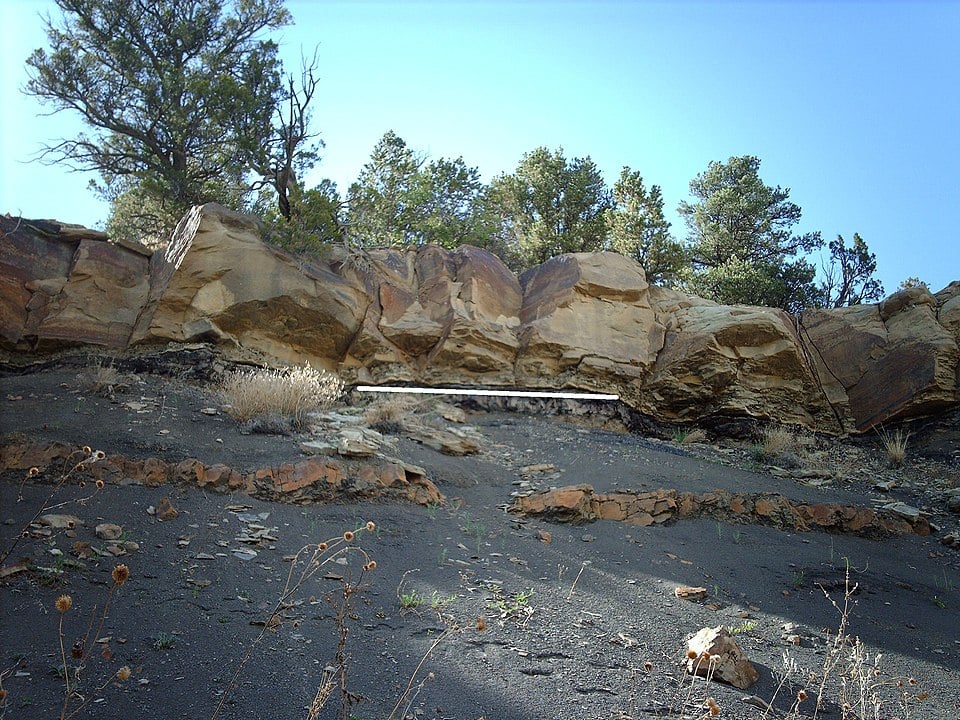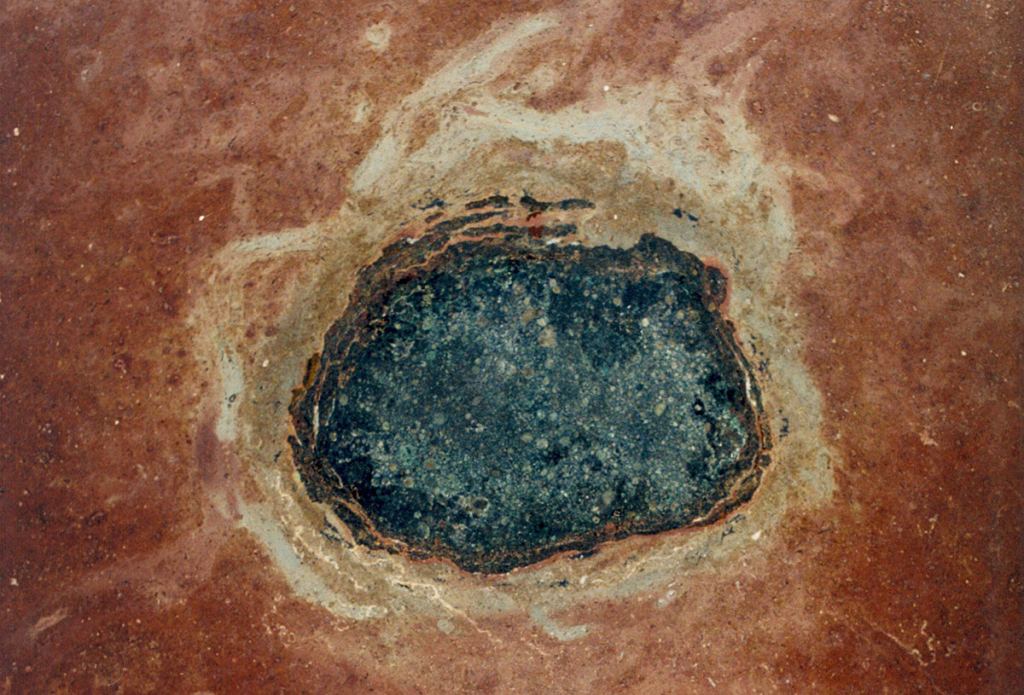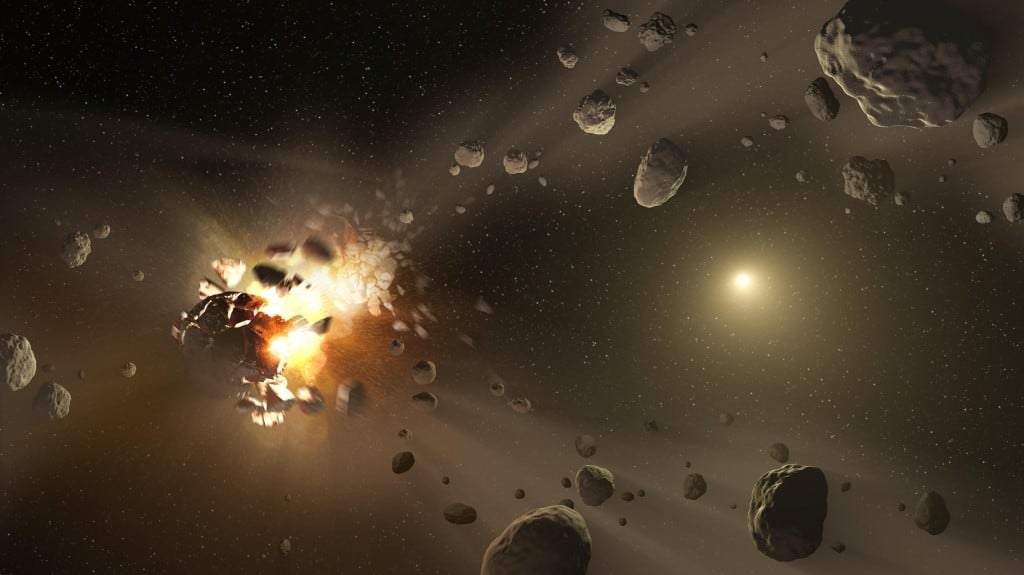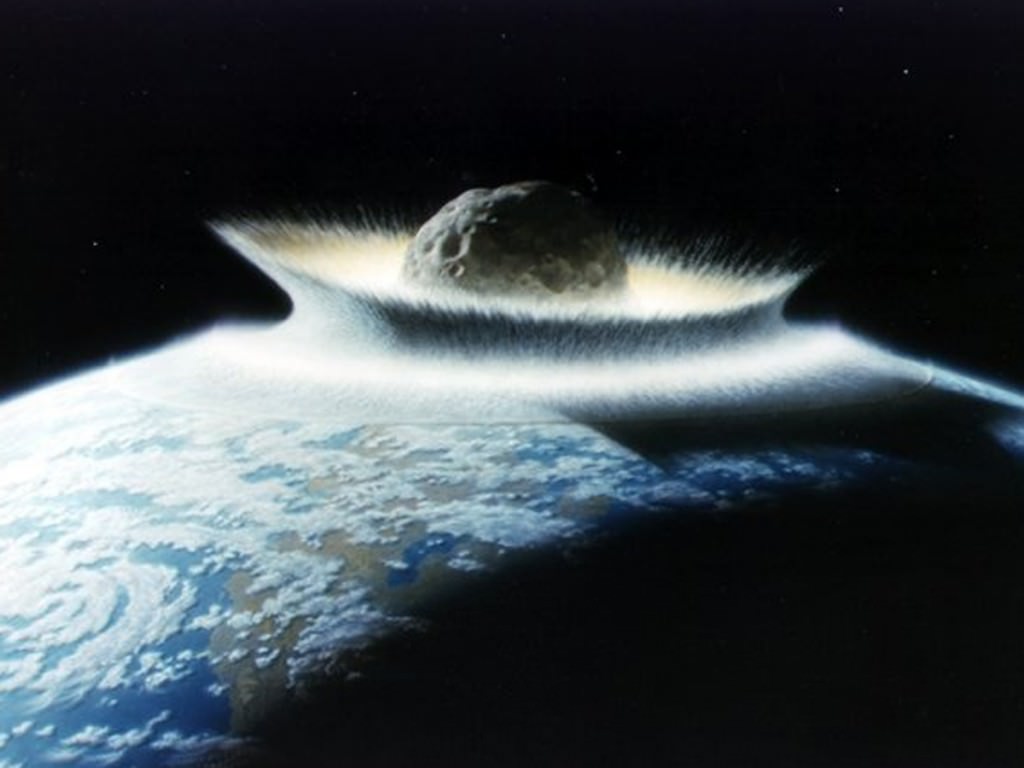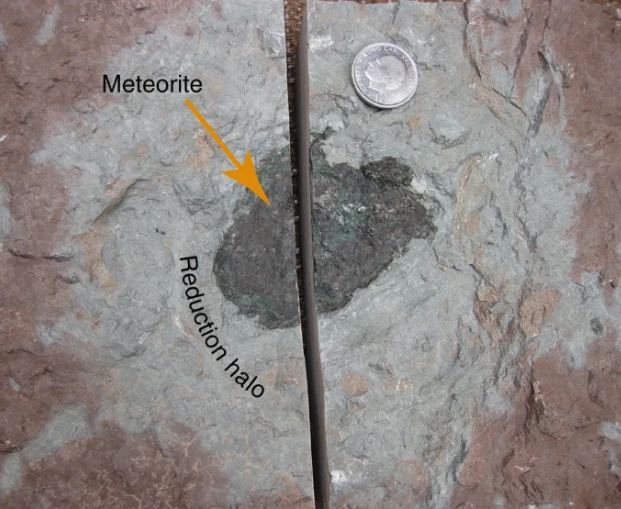Comets visit the inner Solar System, and leave without saying goodbye. Maybe they leave a trail of dust behind, and when the Earth passes through it, we get a pretty light show in the night sky, in the form of a meteor shower. Likewise, asteroids frequently go whizzing by, though they don't leave us with a pyrotechnic display.
Sometimes these rocky interlopers head straight for Earth. And when they do, the results can be cataclysmic, like when an asteroid struck Earth about 66 million years ago, wiping out the dinosaurs and 75% of life on Earth. Other times, it's not quite as cataclysmic, but still devastating, like in about 2350 BC, when debris from a disintegrating comet may have caused the collapse of an ancient empire.
But regardless of the severity of any of these individual events, the conclusion is crystal clear: Earth's history is intertwined with the coming and going of space rocks. The evidence is all around us, sort of.
Large enough rocks leave massive craters, and though the Earth is good at erasing those craters, scientists are getting better at finding them, as evidenced by the discovery of the dinosaur-ending Chicxulub impact crater from 66 mya. And if smaller rocks fall to Earth in our time, they can be found sitting on the surface, especially in deserts, or in Antarctica or the Arctic.
But what about tiny, ancient micrometeorites? Don't they have a story to tell, too? Of course they do, but it's a difficult one to decipher.
Our Solar System has settled down over time. In earlier epochs, there was more chaos, and more rocks whizzing around. In the distant past, there must have been more Earth-shaping impacts, both huge and catastrophic, and small and additive. How did those events shape life on Earth?
That question fascinates Professor Birger Schmitz of Lund University in Sweden. Professor Schmitz did his postdoc under Luis and Walter Alvarez, the father and son team that discovered the iridium-rich ash layer at the K-Pg boundary. That layer was a result of the dinosaur-killing asteroid impact in the present day Yucatan peninsula. Finding that iridium layer was a key piece of evidence for the severity of that impact.
Schmitz has continued along a similar line of inquiry in his scientific career. In a recent article in Horizon, the EU Research and Innovation Magazine, Schmitz said "Until their discovery, the evolution of life and the history of Earth was almost always thought of like a closed system," said Prof. Schmitz. "I became fascinated by trying to connect what goes on in space with what happens on Earth."
Now he's looking for evidence of ancient impacts on a tiny scale. Since about 1990, Professor Schmitz has been looking for micrometeorite impact fossils, and it all started in a limestone quarry in Sweden.
That quarry produces floor tiles, and when workers find dark blemishes in them, they throw them in the garbage area of the quarry. But as it turns out, those blemishes are evidence of micrometeorites that struck Earth around 470 million years ago. Professor Schmitz co-authored a research paper on those micrometeorites in 2016.
Now, when workers at the quarry find tiles that appear to contain a micrometeorite, they alert Prof. Schmitz. About four or five times a year they find a tile like this, with a black smudge a few centimeters across. Initially, Schmitz thought that these types of fossilized meteorites might be present in other quarries, but as it turns out, the quarry in Sweden is special.
Time is the key. The sediment that eventually becomes limestone has to build slowly at the bottom of a body of water, over a long period of time. That allows more micrometeorites to become embedded in it.
After 10 years of gathering micrometeorite fossils from the quarry, Schmitz had about 50 of them; a lot, he thought. He did some calculations, taking the amount of rock that workers quarry each year, divided by the number of micrometeorites found. The results were intriguing: according to this, there were about 100 times more micrometeorites falling when the limestone was forming than there are today.
The immediate question that comes to mind is, why? What happened for their to be so many micrometeorites?
"There is one very likely scenario: that if something explodes in space and breaks up into billions and billions of small pieces – well, what we saw in the quarry, that's exactly what would happen," Schmitz said in an interview.
Prof. Schmitz and colleagues published a paper in 2004 showing that these micrometeorites hadn't been exposed in space for long. According to their research, the micrometeorites had only been in space for about one million years, which is not long in astronomical terms. The evidence for this was in the effect of cosmic rays on the micrometeorite fossils' minerology.
In that paper, the authors wrote that "Very large collisions in the asteroid belt could lead temporarily to a substantial increase in the rate of impacts of meteorites on Earth. Orbital simulations predict that fragments from such events may arrive considerably faster than the typical transit times of meteorites falling today, because in some large impacts part of the debris is transferred directly into a resonant orbit with Jupiter." They also concluded that "The fossil meteorites in southern Sweden thus probably originate in the inner main asteroid belt."
Investigating these tiny micrometeorite fossils may seem like a far cry from studying things like the Chicxulub impact event that wiped out the dinosaurs. But a story's plot contains more than just the climax. All along the way, Earth was shaped by events like colliding asteroids, and the resulting shower of micrometeorites.
There had to be a better way than waiting for workers at the quarry to find these micrometeorites. There was, and it centered around chromite, an extremely hardy mineral present in micrometeorites. "It's extremely resistant, it survives everything," Prof. Schmitz said in the interview.
Then along came an EU scientific project called Astrogeobiosphere. "This project will develop the use of relict, extraterrestrial minerals in Archean to Cenozoic slowly formed sediments as tracers of events in the solar system and cosmos, and to decipher the possible relation between such events and evolution of life and environmental change on Earth," the project's website says.
But to find the tracers in all that rock would be a huge amount of work. First of all, Schmitz took 5 kg of rock and dissolved it in acid, and found 10 tiny fragments of extraterrestrial chromite. Schmitz and his team did this several more times at different stratrigraphic layers of the quarry. They found that about 466 mya, there was a huge increase in the amount of extraterrestrial chromite in the rock.
In 2019, Schmitz and his colleagues published a paper presenting their results. These tiny chromite grains inside micrometeorite fossils were telling their story. According to Schmitz and the other authors of that paper, "Extraordinary amounts of dust in the entire inner solar system during >2 Ma following the L-chondrite breakup cooled Earth and triggered Ordovician icehouse conditions, sea level fall, and major faunal turnovers related to the Great Ordovician Biodiversification Event."
So these tiny micrometeorite fossils found by accident in a Swedish limestone quarry are the remnants of an event in space hundreds of millions of years ago that likely shaped the course of life on Earth.
The work continued. Schmitz has dissolved another 20 tons of quarry rock in acid, but from a variety of quarries rather than a single quarry. Each of the samples represents a different period in Earth's deep past. Schmitz wants to be able to map out how the arrival of space dust on Earth has changed over time.
That work is done, but the results won't be published for a while yet. Schmidt says that these micrometeorites continually reveal new evidence of Earth's past. "(Many of) these meteorites are as different from the meteorites that fall today as some of the animals that were living in that time are compared to today's animals," Schmitz told Horizon.
While we struggle to deal with our own newfound power to shape the Earth's climate, forces outside our control thrust their own agenda on events. It's happened multiple times in the past, and events in space may have led to the downfall of early empires. And we still don't have an integrated history of all those events, both on Earth and in space.
But with work like Schmitz's, we're getting closer and closer.
Schmitz's work may all be looking into the past, and it's fascinating. But it also points to the future. It shows that we're at the mercy of distant events in space that land on our doorstep.
We can sit here on Earth, hoping and clutching our pearls, or we can prepare.
More:
- Horizon Article: Space dust fossils are providing a new window onto Earth’s past
- Research Paper: An extraterrestrial trigger for the mid-Ordovician ice age: Dust from the breakup of the L-chondrite parent body
- Universe Today: This Summer’s Asteroid Near-Miss Helped Greenlight NASA’s NEOCam Mission to Search the Skies for Killer Spacerocks
 Universe Today
Universe Today


